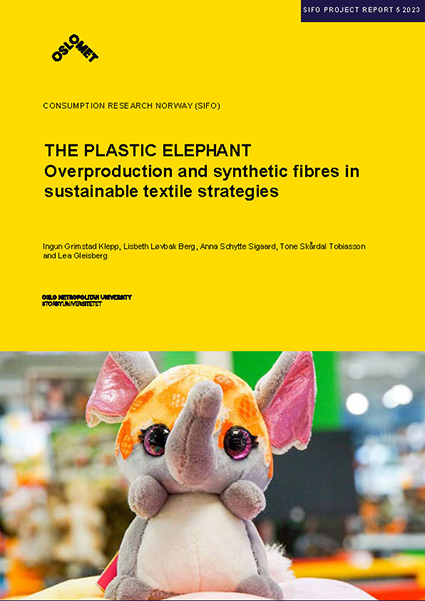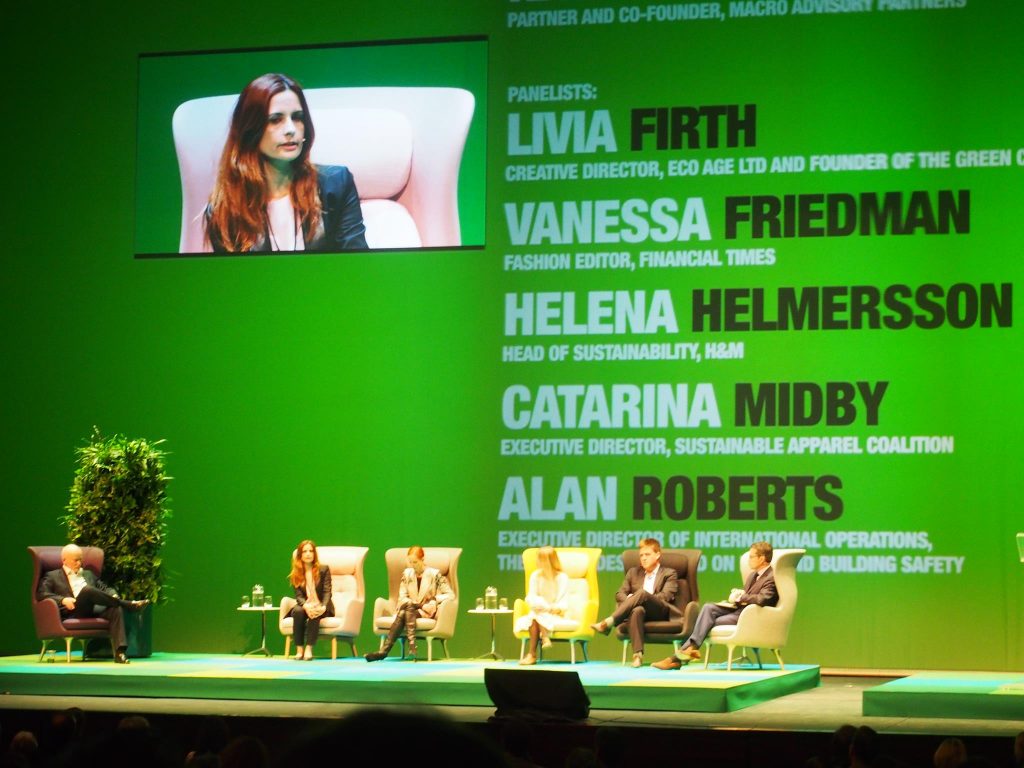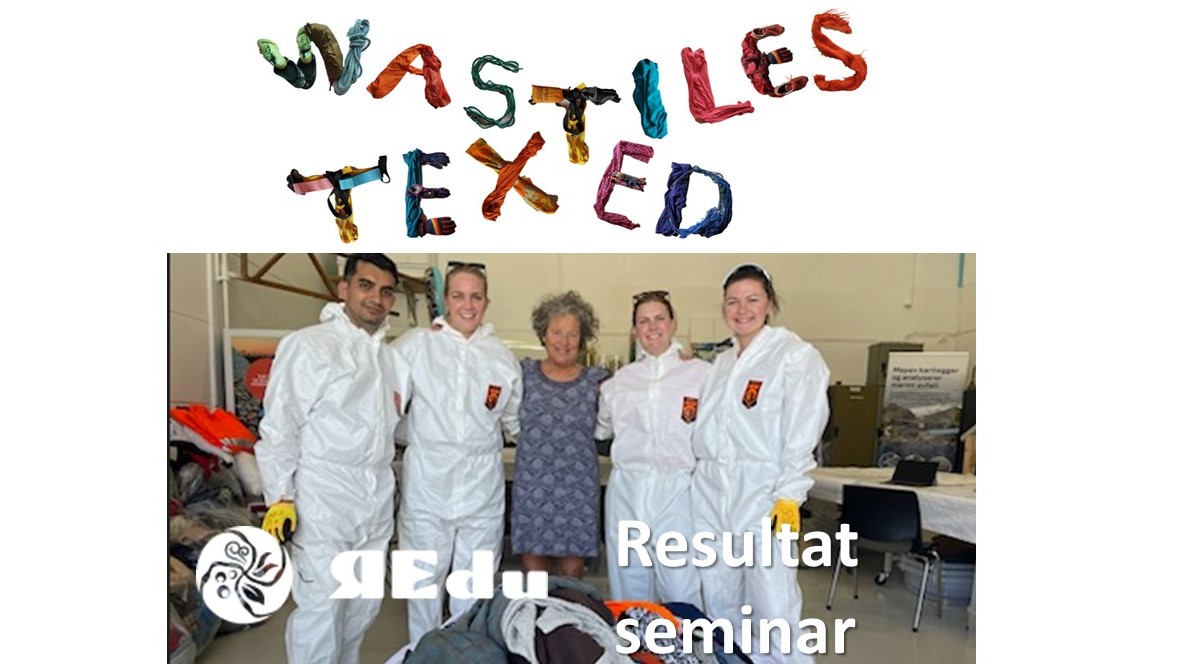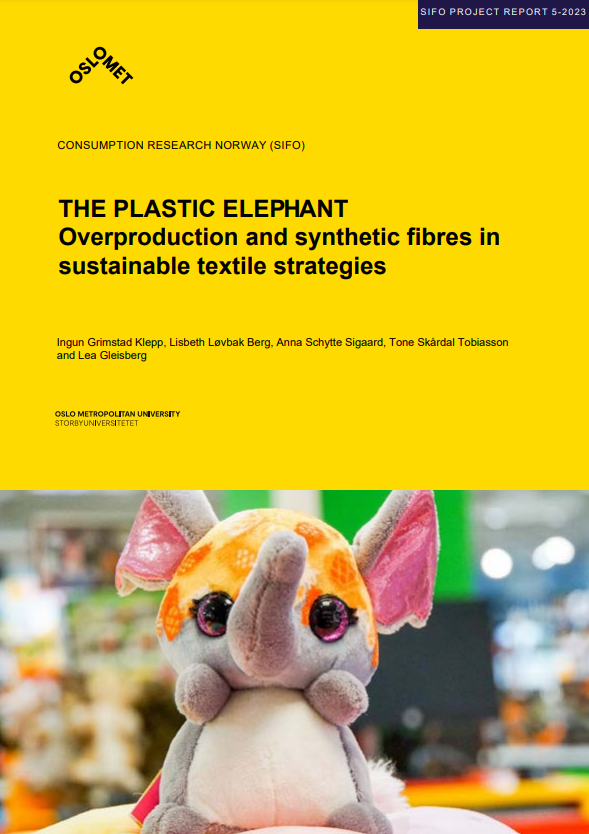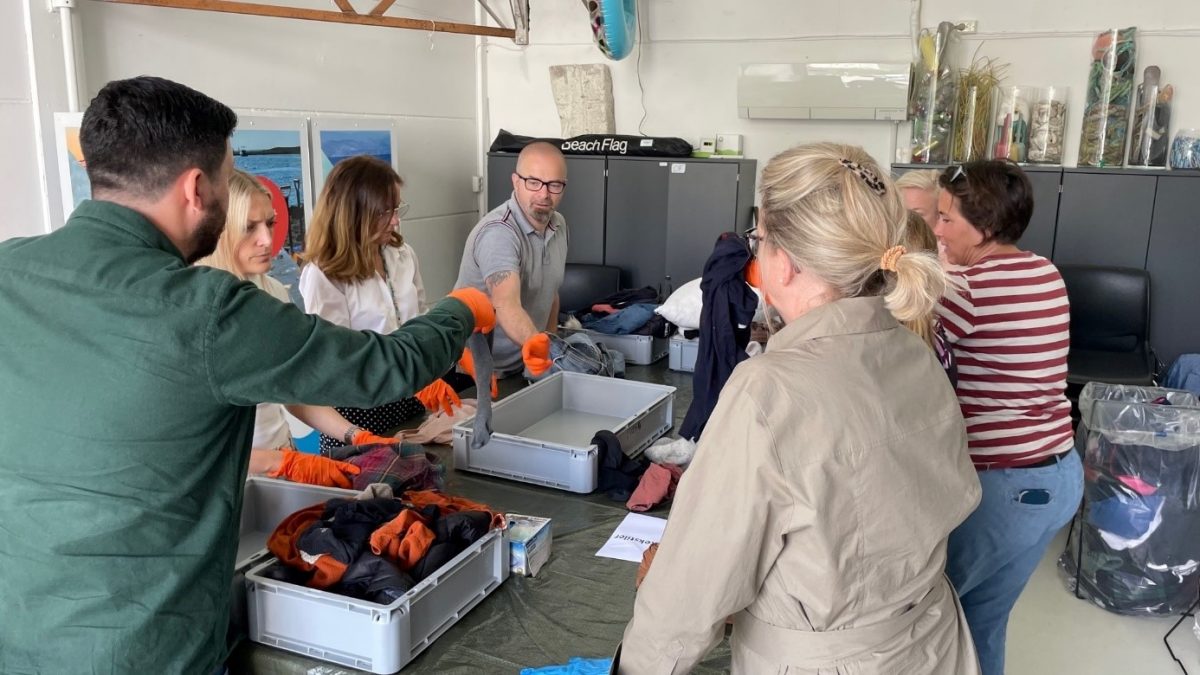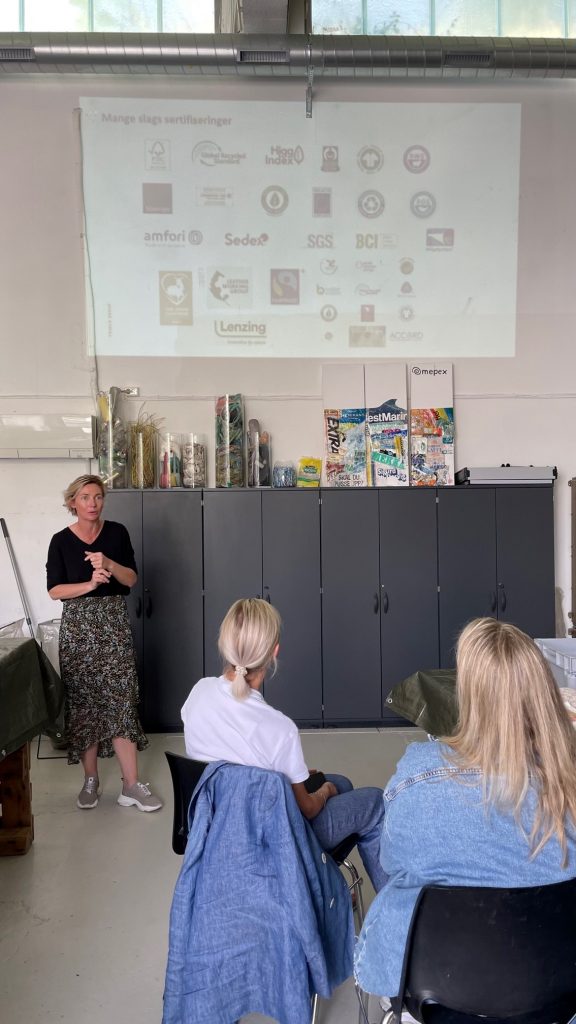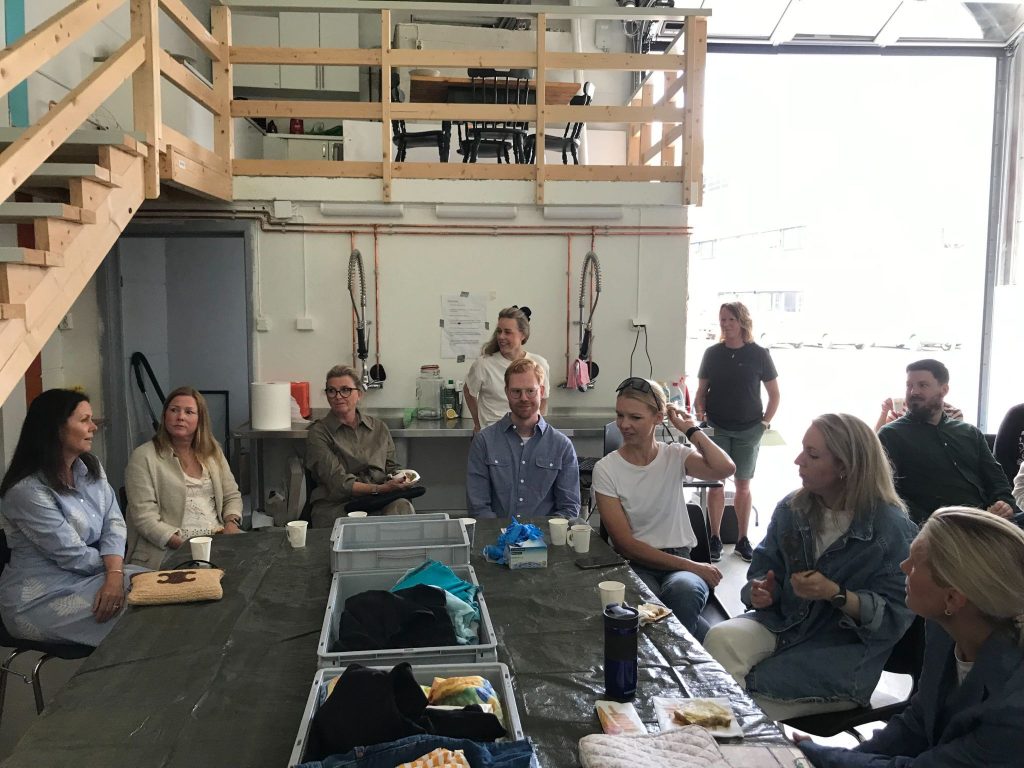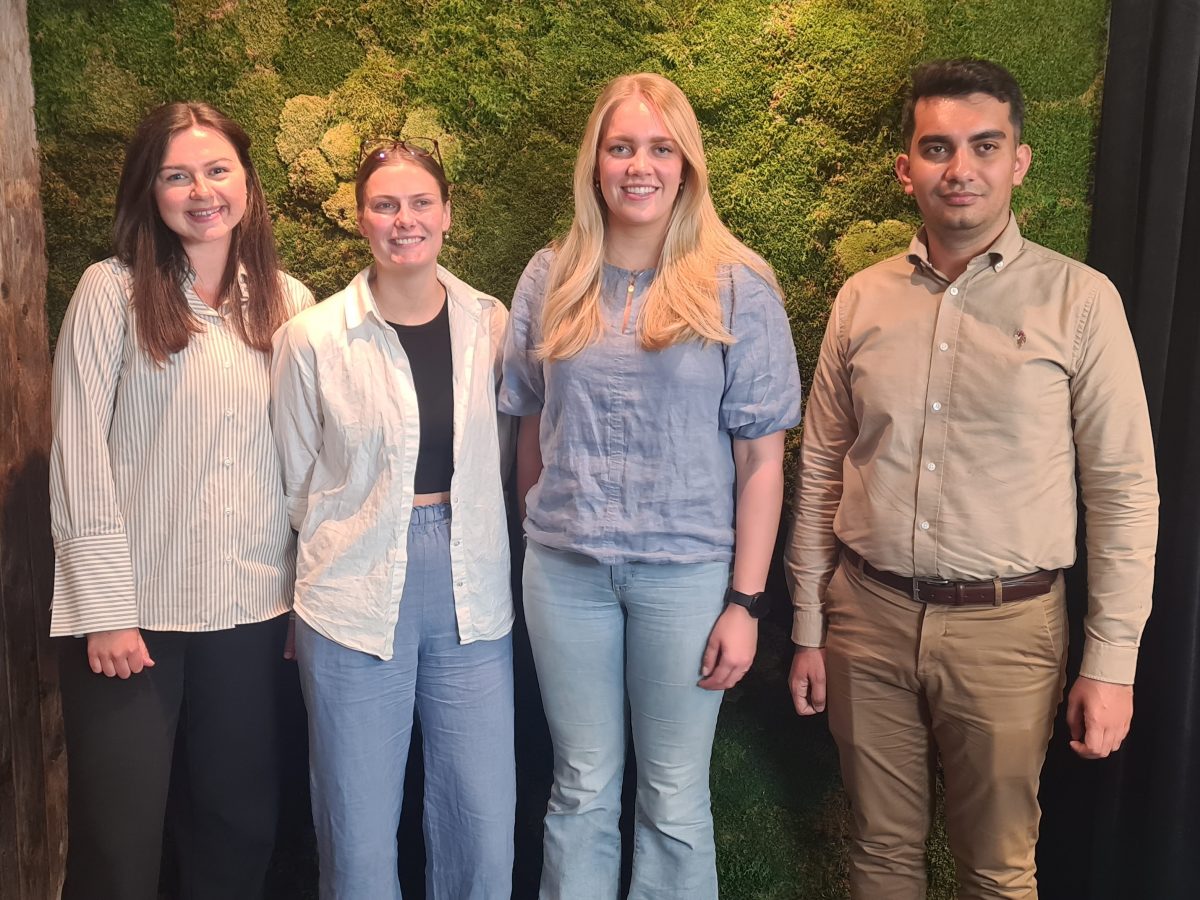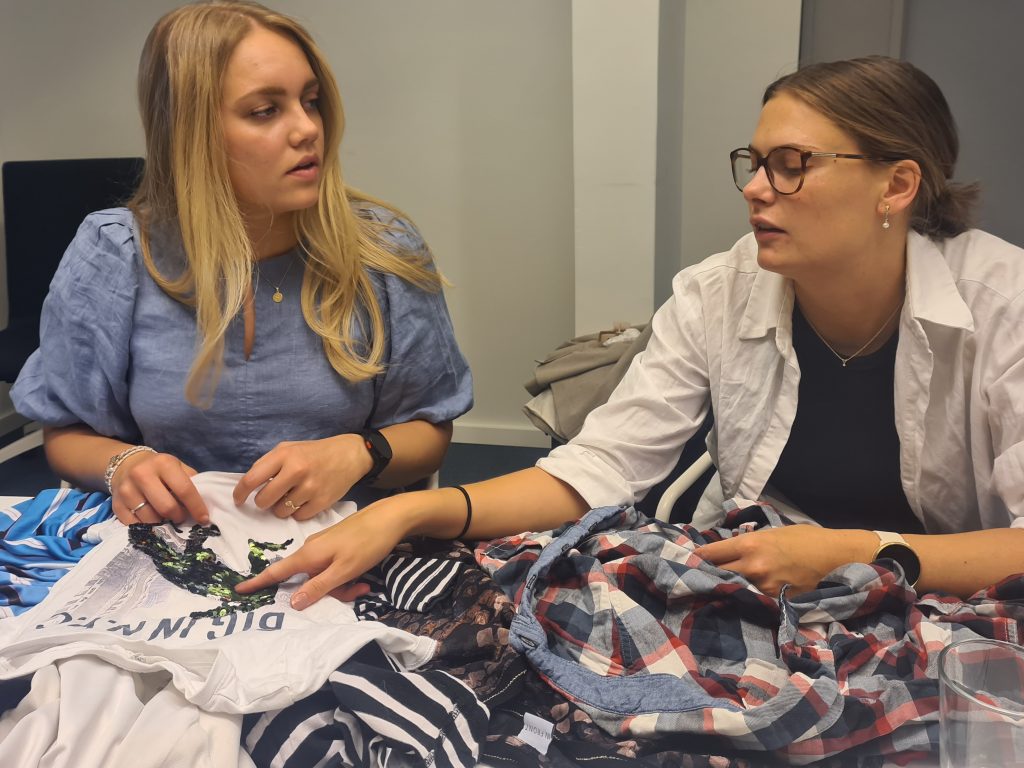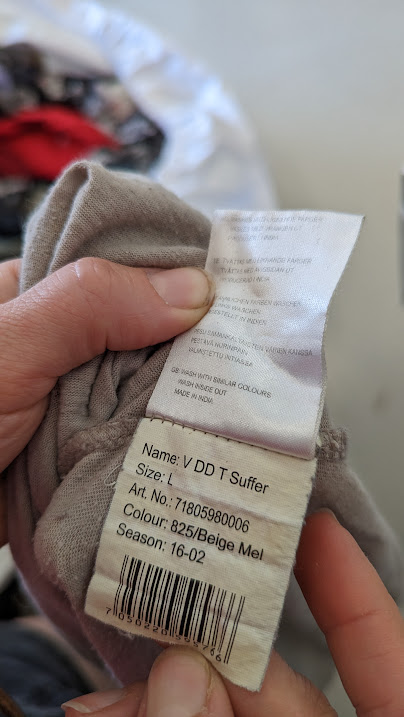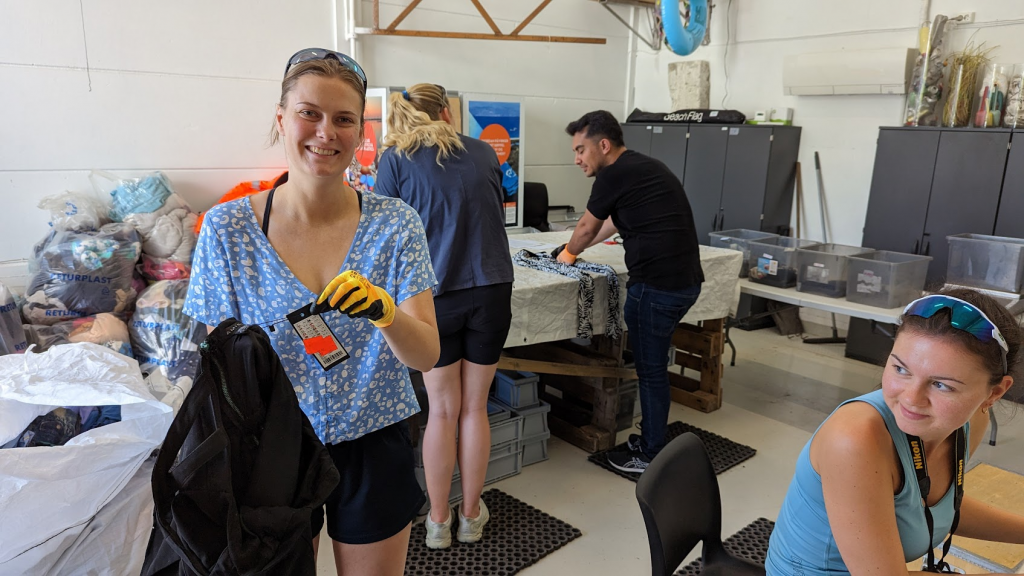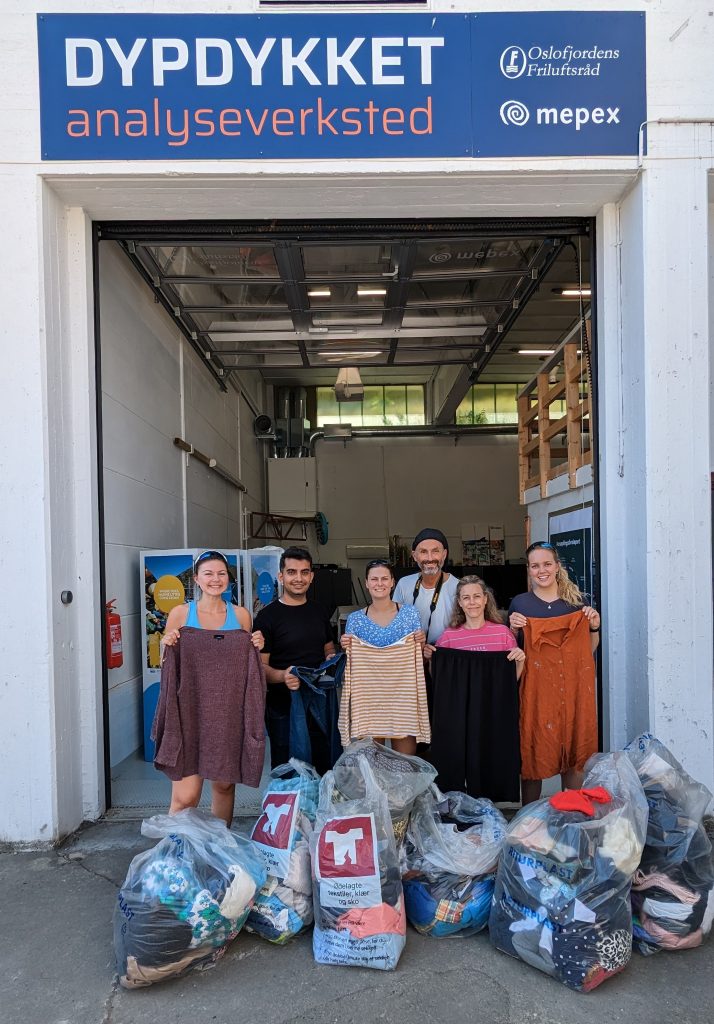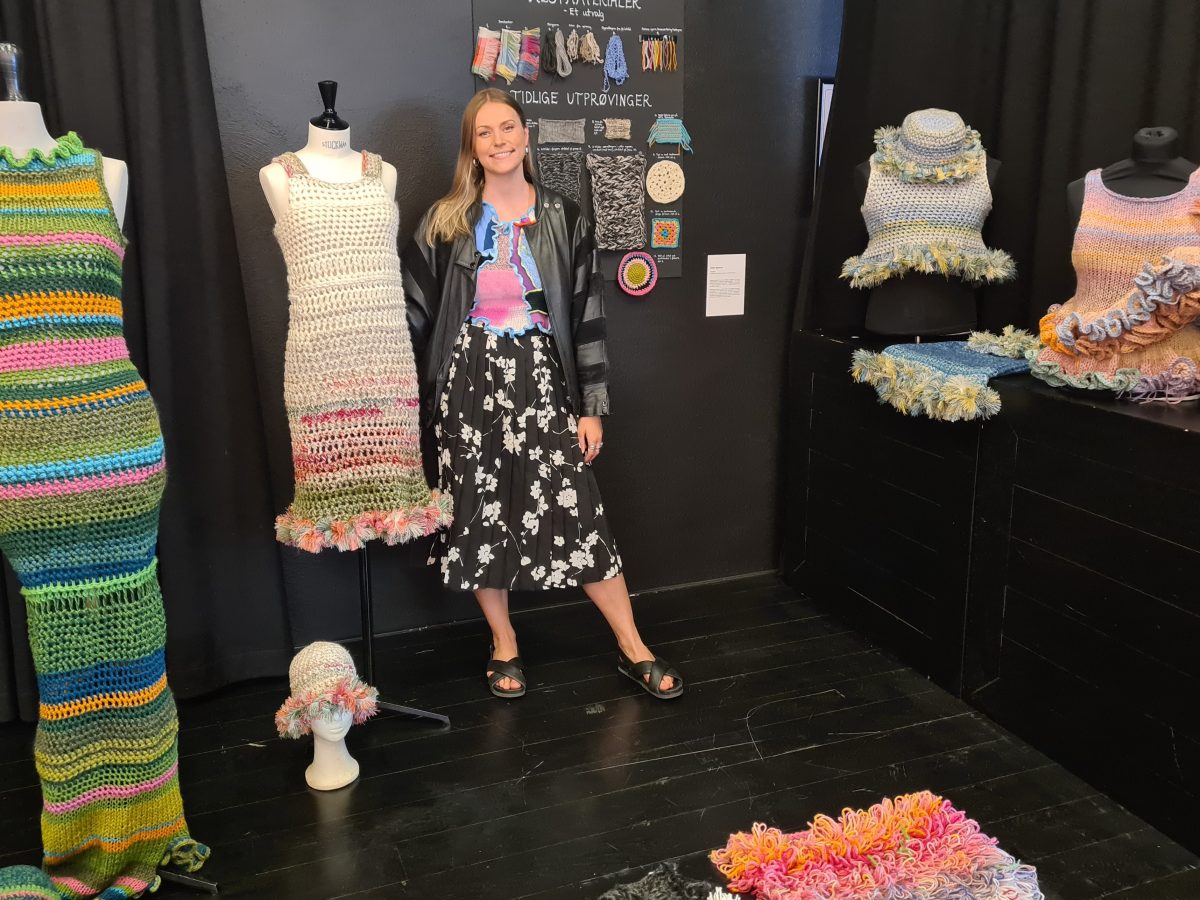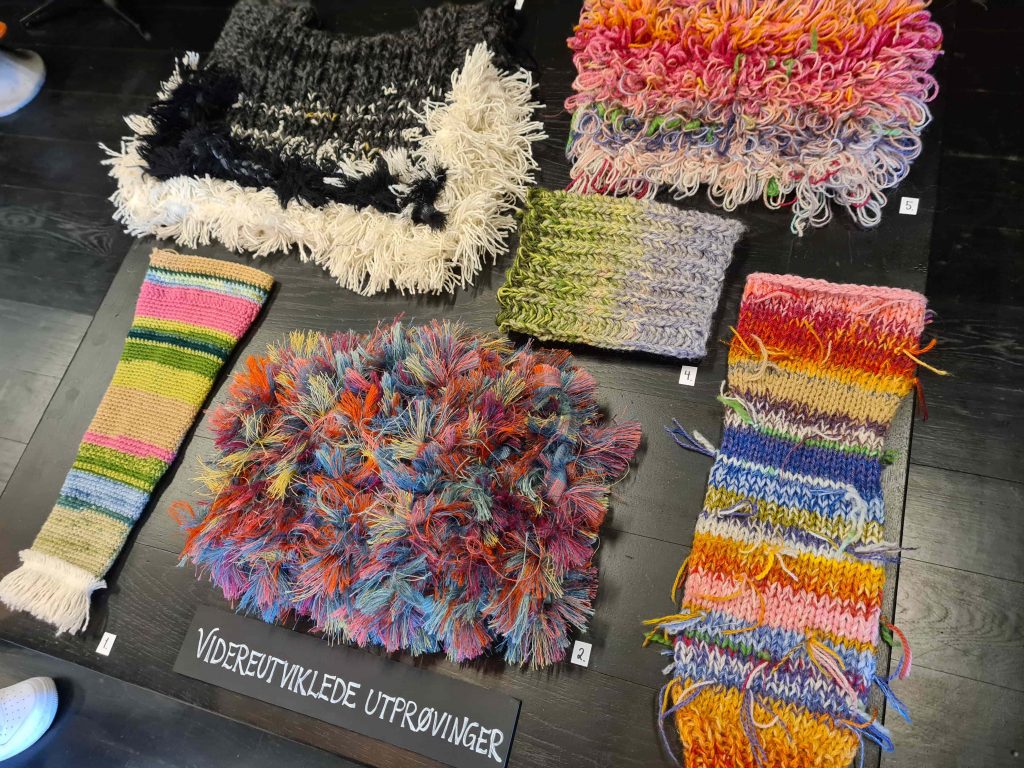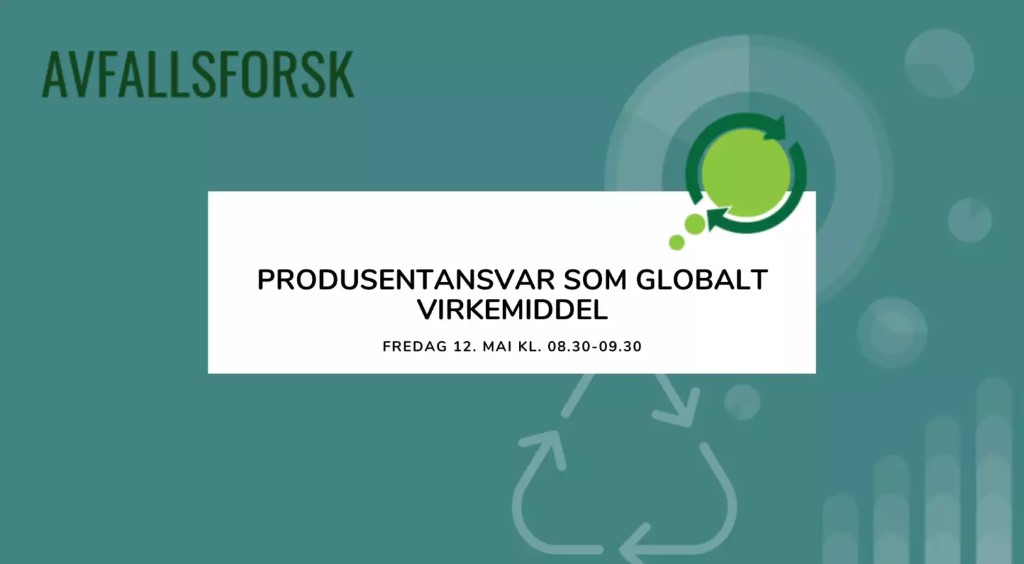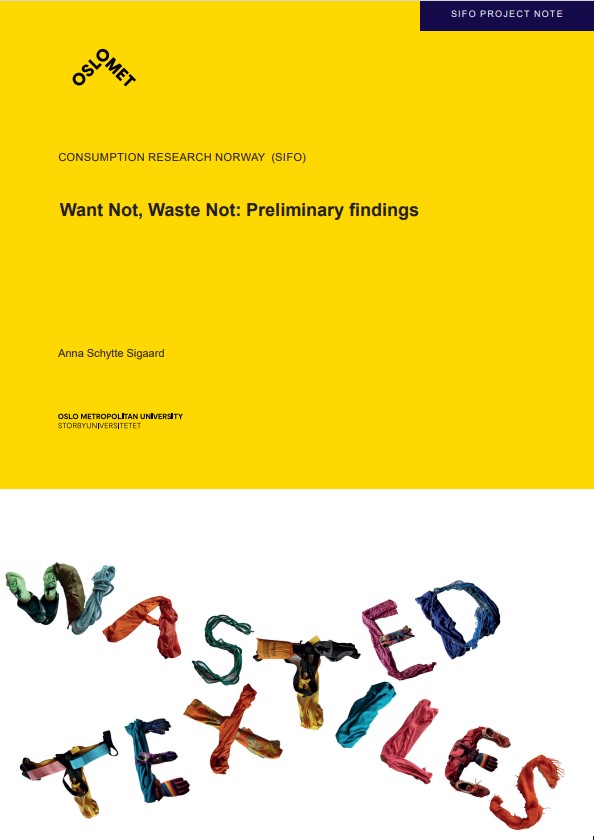Skrevet av Tone Skårdal Tobiasson
Resultatene fra pilotstudien REdu Wasted Textiles, utført av de fire masterstudentene Camilla Sunde (UiO), Eva Hovda (NTNU), Siri Vestengen (NTNU) og Saeid Sheikhi (Høyskolen Kristiania) er nå publisert. Avfall Norge og sommerprogram deres REdu fikk piloten finansiert av Handelens miljøfond, og resultatene fra piloten der de fire stidenten testet ut et system for plukkanalyse som fanger opp viktig informasjon om tekstilene som hovedsakelig hadde status som søppel, presenteres i rapporten som kan leses her (avfallnorge.no).
Fagfeltene til de fire masterstudentene er variert og dekker materialteknologi, informasjons systemer, samfunnsøkonomi og digital økonomi/ledelse.
Analysen utført i Mepex’ Slemmestad-senter gir verdifull innsikt i dagens status for kasserte tekstiler i Norge. Plukkanalyseresultatene for «TPR» (oppkalt etter ideen om målrettet produsentansvar) gir oss informasjon om sammensetningen av fibre, produktenes alder, produksjonsland og merkedetaljer for de kasserte tekstilene. Disse dataene er hentet fra vaskelappen på produktene. Over en periode på 13 dager klarte teamet å analysere totalt 3024 gjenstander ved hjelp av TPR-plukkeanalysemetoden som de finjusterte basert på en kombinasjon av garderobestudier og klassiske avfallsplukk analyser.
Plukkanalyser brukes for andre produktgrupper for å si noe om bruk. I mat brukes denne analyseformen for å overvåke hvor mye spiselig mat som kastes fra private husholdninger (se f.eks. denne studien (miljoderektoratet.no)), og å overvåke og redusere matsvinn fra institusjoner. Tekstilene som ble analysert i rapporten stammer fra ulike avfallsstrømmer: Mepex sin «Klesbyttedag», TRV (Trondheim bys pilotprosjekt om separat innsamling av tekstiler) og restavfall. Restavfall er det vanskeligste å jobbe med på grunn av lukt og fuktighet som gjør det vanskelig å veie gjenstandene. I rapporten er TRV-avfallet det største og viktigste datagrunnlaget, og utgjør 91,4 % av materialet. Tekstiler fra TRV-piloten skal være ødelagte tekstiler. Husstandene for pilotområdet i Trondheim fikk instrukser og spesialposer for skadede tekstiler, klær og sko. Beboerne ble oppfordret til å levere brukbare tekstiler til innsamlingsbokser som allerede er utplassert i området, og sette posen med ødelagte tekstiler utendørs for henting på en fast dag, hver fjerde uke. Internene fotograferte alt fra avfallsstrømmene, ga hver tekstilvare et nummer, og registrerte informasjon om merkevaren/brandet kunne identifiseres, om vaskelappen var intakt, om det var et produksjonsår eller når produktet kom på markedet hvor som helst på tekstilen, opprinnelsesland, fibersammensetning, hvilken tilstand av «brukt opphet» varene var i, vekten, osv.
Funnene i REdu-prosjektet er basert på et lite utvalg, totalt 3024 tekstilprodukter. 2564 av 3024 varer (totalt registrerte) hadde merkevaren/brandet enten på etiketten eller i form av en logo synlig. 708 forskjellige merker ble identifisert, men noen få dominerte, H&M var i ledelsen, etterfulgt av Cubus, Lindex og KappAhl. Av de 3025 analyserte tekstilene hadde bare 95 produksjonsåret på vaskelappen, 2905 inkluderte ikke denne informasjonen. Av disse klesplaggene var 14 fra NameIt (et dansk barnemerke), 7 fra Vero Moda, 7 fra Selected, som alle tre er Bestseller-merker, og 6 av dem var fra Bik Bok. For de resterende enkeltmerkene var det 61 med produksjonsår. Noen merkevarer har etiketter med koder som kanskje inneholder denne informasjonen, som de må i tilfelle forklares. Noen merkevarer sa at de er villige til å hjelpe med denne informasjonen.
Fremgang i effektiviteten for TPR-plukkanalyse viser potensialet for å bruke plukkanalyse og tiden det krever å finne informasjonen. I TPR-tilnærmingen benyttet de flere inputparametere og klarte å analysere gjennomsnittlig 234 produkter per dag, tilsvarende rundt 79 kg. På den annen side brukte den «raske TPR-metoden» færre parametere, mens den likevel fanget opp detaljer for hvert tekstilprodukt. Med denne tilnærmingen er gjennomsnittlig antall gjenstander undersøkt i løpet av 30 minutter 29, tilsvarende 7,6 kg per person. Tiden brukt til å analysere ble påvirket av de forskjellige tekstilene som ble analysert, da flerlags og kompliserte multifiberartikler var mer tidkrevende.
Ved vurdering av potensialet for maskinlæring i tekstilavfallshåndtering er resultatene lovende, men ikke uten utfordringer. Den første modellen med fokus på tekstiltypeklassifisering oppnådde de betydelig nøyaktighet, med en nøyaktighet på 82,25 %, og understøttet det praktiske ved å bruke automatisering for sortering av tekstiler. Brukervennlighetsklassifiseringsmodellen fremhevet imidlertid behovet for omfattende og kvalitetsdata for å forutsi gjenbrukspotensialet til et produkt. Mens maskinlæring gir stort håp når det gjelder å forbedre sorteringseffektiviteten, bestemme gjenbrukbarhet og fremme fiber-til-fiber-resirkulering, avhenger suksessen av flere faktorer. Disse inkluderer utvidelse og kvalitetsforbedring av datasett, integrering av avanserte sensorteknologier og en bredere vurdering av miljømessige, økonomiske og sosiale konsekvenser. Etiske hensyn er avgjørende, spesielt for å sikre at maskinlæringsmodeller fungerer effektivt og etisk. Ved å samarbeide med EPR-ordninger (utvidet produsentansvar), kan tilbakemeldingssløyfer mellom produsenter og avfallshåndtering optimaliseres.
Dataene samlet inn fra de undersøkte tekstilproduktene fremhever muligheten for gjenbruk av materialer i tekstilsektoren, ting som forbrukerne selv anser som søppel. Det var relativt enkelt å vurdere slitasjenivået i klær, faktorer som nupping, flekker, misfarging, skadede glidelåser, manglende knapper, hull og generelle tegn på bruk er enkle å oppdage og registrere. Et flertall av varene var i en god brukbarhetstilstand, 42 % av tekstilene fikk en tilstandsvurdering på 4 (5 er den høyeste poengsummen som indikerer i perfekt stand, mens 1 er ikke gjenbrukbar i det hele tatt), noe som tyder på at de kasserte tekstilene ikke var «brukt opp». Det ble også funnet 21 tekstilprodukter med prislappene på. Mens noen produkter hadde mindre skader, kan mange av disse repareres uten problemer, noe som peker mot verdien av å formidle grunnleggende reparasjonsferdigheter til forbrukerne. Spesielt hadde 17,66% av produktene maksimal gjenbrukes-vennlighetspoeng på 5, noe som indikerer at et betydelig antall nesten nye varer ble forkastet. Vi vil minne leseren om at disse skulle være utslitte eller «ødelagte» produkter, da fullt brukbare tekstiler skulle doneres i donasjonsboksene.
Dataene innhentet i denne analysen har stor betydning for å forstå mulighetene for automatisert sortering, gjenbruk av tekstiler og resirkulering. Det gir et grunnlag for å introdusere strategiske verktøy som utvidet produsentansvar (EPR) og retningslinjer fokusert på avfallsforebygging. Forhåpentligvis kan TPR-plukkingsanalysen brukes til å vurdere økomodulerte miljøavgifter i en EPR-ordning, med sikte på å redusere overproduksjon av tekstiler i fast fashion-sektoren. I 2022 ble det sendt ut 105 913 tonn nye tekstiler, tilsvarende 19,3 kg per innbygger, på det norske markedet, så fremtidig datainnsamling står ikke i fare for å ikke ha tekstiler å studere, også når tekstilavfall skal bli samlet inn separat fra 2025.
